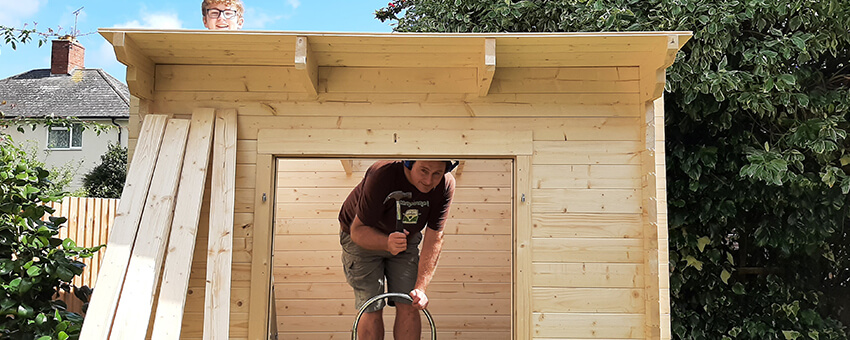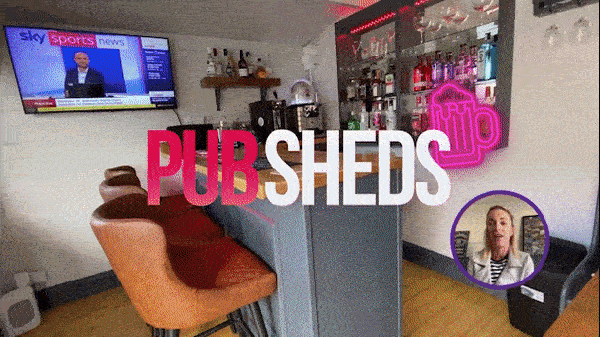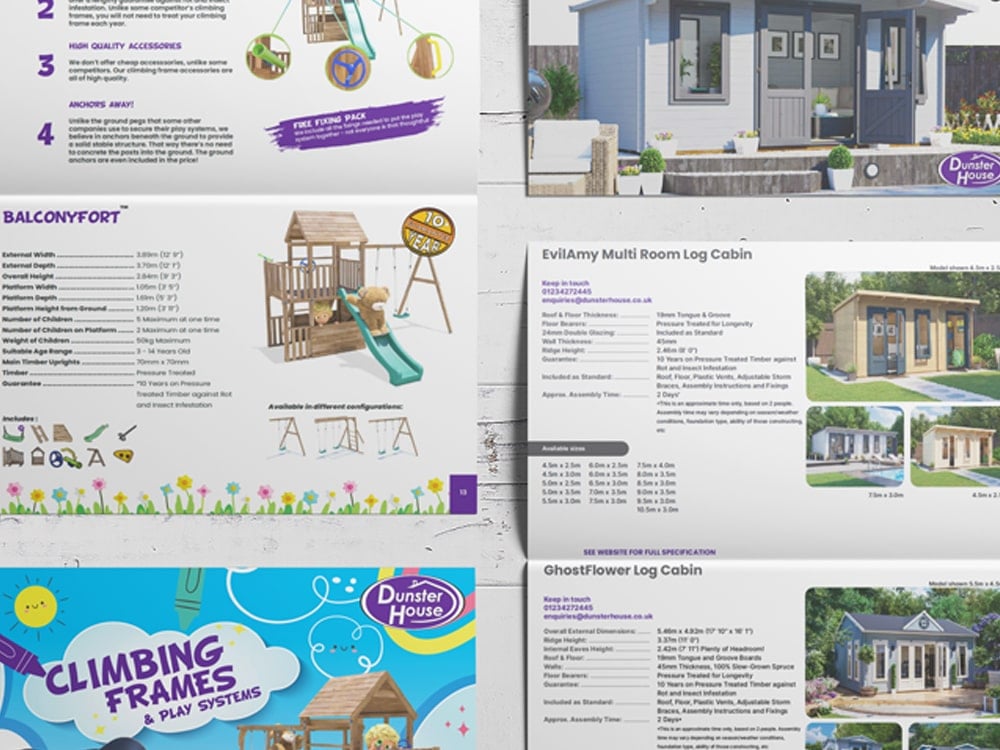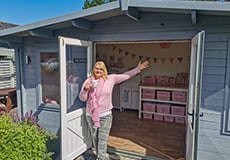Have any log cabins questions? Here you will find answers to some of the most frequently asked questions about log cabins.
What is a Garden Log Cabin?
When you think of a log cabin, you might think of a chalet in the Alps or a lakeside holiday home in the States. At Dunster House, we mean ‘log cabins’ in the sense of garden buildings and summer houses. We are the UK’s leading provider of log cabins, the most multi-functional garden rooms on the market. They are temporary buildings, not designed for accommodation, but have a multitude of other great uses. You can find out more about the features and benefits of our log cabins in our video below.
What Can I Use my Garden Log Cabin for?
A log cabin can work really well in a number of ways, such as a garden office, pub shed, man cave, craft room, secondary lounge, workshop or even to run a beauty salon or dog grooming parlour. It is an excellent alternative to a house extension. It is also an easier and cheaper way to gain that bit of extra space in your home.
Get inspiration from what our customers have done with their log cabins on our social media pages:
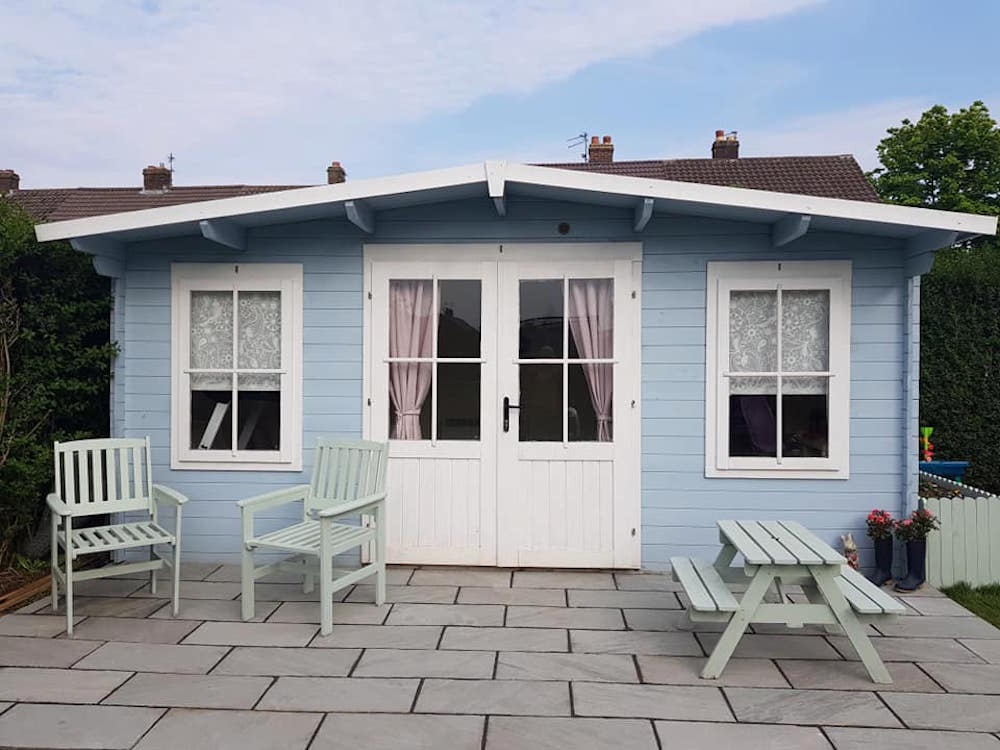
What are the Types of Log Cabins?
When researching your log cabin purchase, there are a few things to take into consideration when choosing which log cabin type you prefer. The first thing is to decide on the size. We provide cabins in many shapes and sizes, ensuring they are within the 30-metre squared Building Regulation requirements. You might also want an extension on your cabin, or a side storage option. Next, it is time to consider the various styles of roofs. You can either go for a traditional chalet style with an apex roof, or a more modern pent-roof style. Explore our range of log cabins.
How Much Maintenance/Aftercare is Required for a Log Cabin?
Before buying your garden log cabin, you should be aware that a timber building will need regular maintenance. Timber is a natural material and can be prone to expanding contracting, or absorbing moisture. The cabin must therefore be prepared for wetter seasons by being treated regularly and inspected for any gaps or problems. We have a handy guide on maintaining log cabins.
How do I Lay the Foundation of my Log Cabin?
Firstly, you need a suitable flat and level base to build your cabin on. This is the most important step when it comes to easing the build and ensuring the longevity of your cabin. See our article for more information on how to lay a base. Once you have your base ready, you can lay your bearers using our handy bearer layout diagrams. These diagrams are provided with your order confirmation documentation, as well as on your manual. These make up the foundations that the log cabin will sit on.
How to Build a Log Cabin?
When you are ready to build your log cabin, you need to decide whether you will be doing so yourself, or requesting the help of a local tradesman or handyman. Our cabins are designed for the competent DIYer to build, and provide easy-to-follow pictorial instructions. The build involves locking the wall logs into one another, slotting in the windows and doors, then fitting the apex and purlins, before nailing in the roof boards and then the floorboards. Accessories and hardware are fitted at the end, as well as your chosen roof protection materials. Putting a log cabin together typically takes two able-bodied people around two days in total. But this varies depending on a number of factors and DIY experience.
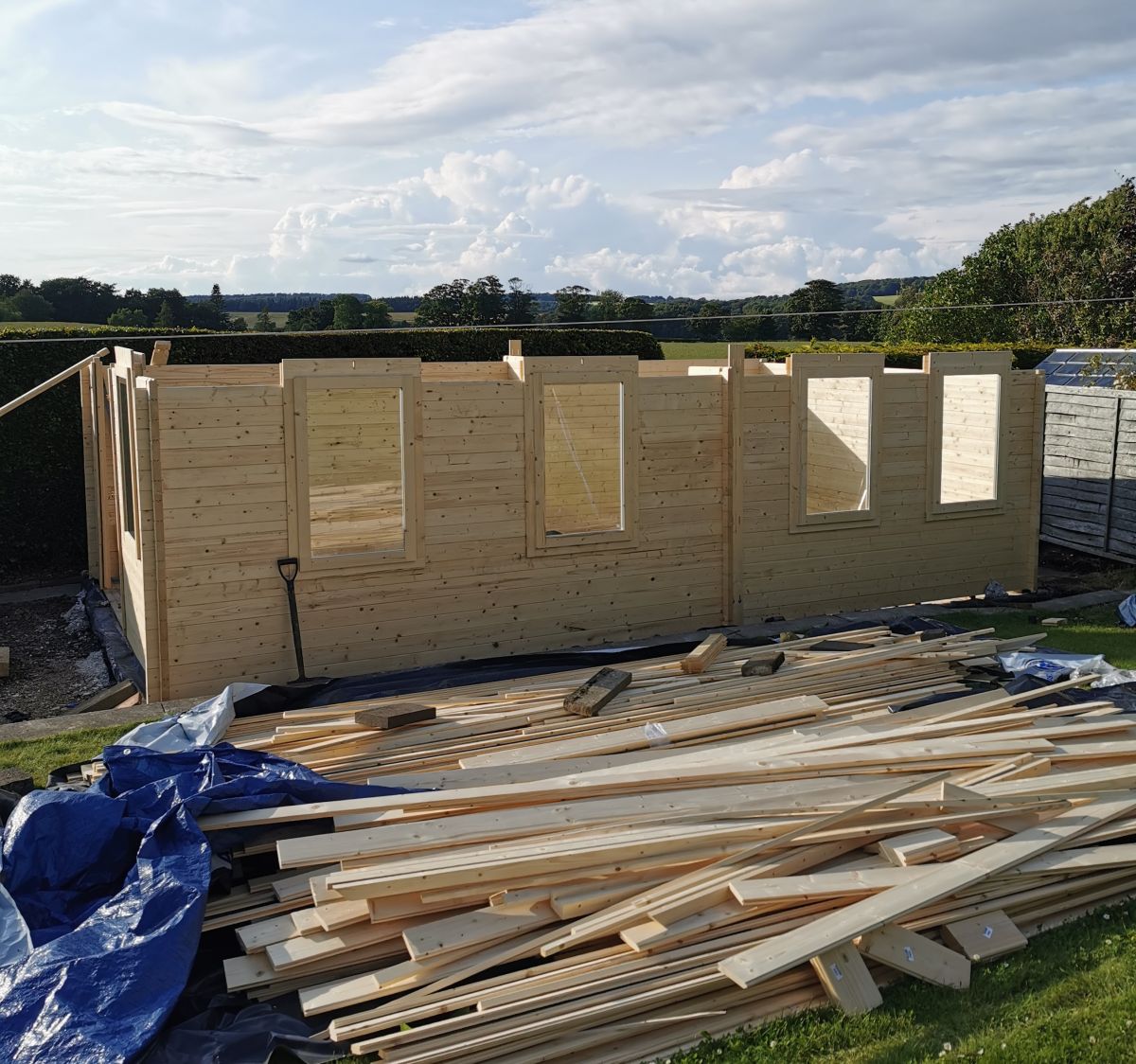
How to Protect Your Log Cabin?
Another important part of the process that you will need to allow time for is the treating of the timber. This will protect it from moisture absorption and keep it looking its best. You may choose to paint each individual part before/during the construction of your cabin. Or you might want to paint the cabin once it is erect. You can apply paint or treatment to both the inside and outside of the cabin. Choose your colour scheme to match your garden. We supply a great range of timber treatments, provided by our partners, Protek Wood Stain.
How to Landscape Around Your Log Cabin?
Once you have finished your cabin build and painted it, you can start to think about how to fill it and the landscape around it. If you have chosen to create a man cave or pub shed, you might want to add decking and an outdoor seating area. If your cabin is more of a summer house to complement your garden design and plant beds, you can surround it with flowerbeds and maybe even a water feature. Bear in mind that if you choose to place your log cabin under a tree or overhanging branches, you should regularly check the roof for debris that might have gathered there that may prevent water from falling off the roof properly.

How to Prevent Movement in Your Log Cabin?
Our log cabin walls are designed to be ‘free-floating’. This allows for the expansion and contraction of the logs which is entirely natural in timber. Our clever design features storm braces that are adjustable. If you do happen to find any gaps between your wall logs, you can loosen your storm braces, leaving the building to settle and the gaps to close- this may take a few weeks. You might want to manually tap down the timbers with a mallet to speed up the process. Please also remove the screws from behind the Dunster House plates on the frames whilst carrying this out.
You can then retighten the storm braces to hold the logs in place and help prevent further movement. Watch our helpful video on this technique.
How to Look After the Windows and Doors?
Remember to give just as much attention to the windows and doors as to the rest of your cabin when you come to treat the timber. Timber moves and continues to do so throughout its life, it is likely that your doors will need adjusting to keep them in good working order. If the hardware becomes stiff, it should be greased.
Doors with double glazing should be adjusted using the heel-and-toe method. To do this, you will need to take out the sealed units and rearrange the packers to make sure each sealed unit is packed correctly. View our instructional video demonstration. To bring the doors closer together or further apart, and for single-glazed doors, adjustments are made using the hinges. Please see our video guide that covers this.
What Flooring can I Add to my Log Cabin?
How you decide to decorate the interior of your log cabin is entirely your decision. We would class ourselves as experts in the field of timber garden buildings, however we cannot advise on flooring types. If you wish to use a varnish on your flooring that is suitable for untreated timbers, then there is no harm in this. However, if you are considering adding laminate flooring or carpet, you might want to contact a flooring expert in order to ensure that the product will be suitable for use in such an environment. Any floor coverings need to allow effective air circulation under your cabin in order to prevent collection of damp which may lead to rot.
Can I Add Electrics Such as Heaters in my Log Cabin?
Fitting electrics to a log cabin is a popular idea, of course. However, once again it is difficult for us to advise on the best ways to do this as we are not electricians. We do know that fitting trunking to the walls of your cabin could prevent the free movement of the wall logs and lead to gaps forming. We recommend that you speak with your electrician on the best ways to fit electrics to suit your log cabin design and uses.
Is it a Good Idea to Plasterboard the Walls of my Log Cabin?
Another popular addition to a log cabin that can often prevent the movement of the free-floating wall logs, and therefore lead to gaps forming, is plasterboard. We have in fact tried and tested this as a modification to our design and can confirm that it is not a good idea as can lead to the logs being unable to tighten down upon one another to close any gaps. We therefore do not advise plaster boarding the walls as being a good idea for your log cabin.
What is special about a Dunster House Log Cabin?
Dunster House log cabins are designed with the idea of high-quality material, a simple DIY construction and a value-maximising price. There are standardised features over Dunster House log cabins, such as our secure multipoint locking systems, the slow-grown spruce, and more. We still want you to be able to add your own personal flair to your Dunster House log cabin so why not try our range of protective paints, optional extras or anything else from our customisation menu. Check out our Dunster House Log Cabins!
If you have any further log cabin questions, or can’t find the answer you need, please don’t hesitate to get in contact.


